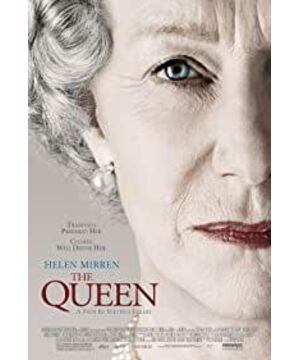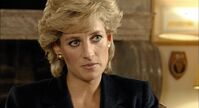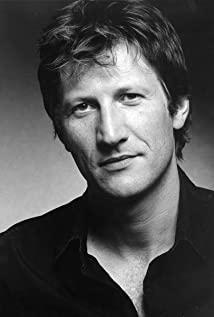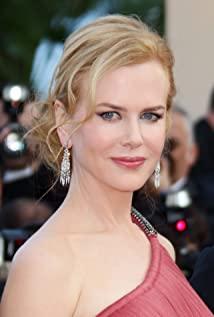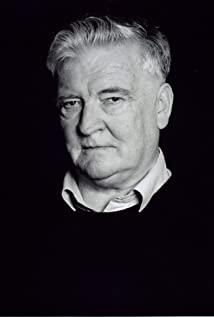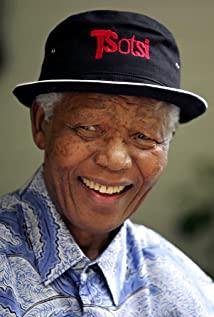The Queen, directed by British director Stephen Fries, focuses on the crisis of confidence caused by the accidental death of former Princess Diana in early September 1997. Through the conflicts between the royal family, the Labour government, the public and the media, The process from accumulation, eruption to resolution within a week, vividly and truly shows the game between traditional concepts and modern concepts.
At the beginning of the film, Queen Elizabeth II sees the TV news of Tony Blair's family going to the polling station on the morning of election day, and asks the painter if he did not vote for Blair because he is not a revolutionary. The painter answers that he is worried that the country is in danger of losing its excellent cultural traditions. edge. After that, the film re-describes the Queen's fear that the new prime minister will shake the British constitution and subvert tradition, and dislike the democratic atmosphere of the prime minister's residence, which has paved the way for the opposition and conflict between traditional and modern concepts. And this confrontation and conflict, to be precise, is concentrated in the wrestling of royal conventions and authority with the media and its own violence. That's what the film is about.
The film vividly and concretely shows the functions and roles of television, newspapers and other media, using the media itself as a mass media to disseminate information, express public opinion, and create and influence public opinion, as well as the violence of the media itself. The film examines the words and deeds of the former Princess Diana in the late August 1997 through TV news pictures by means of a platoon montage method, and at the same time shows the enthusiastic pursuit and interviews of her by paparazzi from many media. For this reason, on the day of Diana's death (August 31, 1997), the Queen condemned on the TV broadcast through the royal spokesperson that she had always feared that the media would kill her sooner or later, and accused all those who would do anything to obtain photos. The hands of operators, editors and journalists were covered in blood. When Blair suggested that the Queen give the public a chance to mourn her together, the Queen reiterated that the princess was harmed by the media and opposed her continued exposure to the media. According to the Queen, the Princess died from the violence of the media itself.
Although scandals such as Diana's extramarital affairs and divorce have been reported before, but because of her accidental death in Paris, the people of Diana have passed away. The people under the control of modern ideas still forgive the beautiful and kind princess in their minds, and even regard her as an anti-old system. Idol. The queen who sticks to the tradition, based on the fact that Princess Diana has left the royal family, and there is no precedent to follow, thinks that the Spencer family should hold a private funeral, and ignores the TV report of someone laying flowers in front of Buckingham Palace. Avoided, the family went to Balmoral Castle in Scotland. On September 1, 1997, when the Queen's husband, Prince Philip, wanted to take the children to a hunt, the Queen warned them not to bring guns, in case reporters saw it and wrote about it. She originally shared the same car with Prince Charles. When Charles said that he regretted not taking the children to Paris, the Queen thought it was fortunate that this was the case, otherwise it would be even more terrifying if the media were photographed. This further shows the fear and disgust of the Queen and the royal family towards media violence.
On September 2, the TV media, together with the public, made news, accusing the royal family of not flying the flag at half-staff, and the royal family would be embarrassed by it. Prime Minister Blair made timely suggestions based on public opinion expressed in the media, but Prince Philip, an important member of the royal family, insisted to the Queen that according to royal rules, the flag should only be raised when the monarch is commemorated. Since the Queen is still alive, the flagpole should be empty. The royal convention and the media have formed a stalemate and confrontation.
The people who were indulging in grief gradually became dissatisfied with this and became more and more resentful. After the media changed pressure, it quickly fermented. For a time, the group became angry and kept rising, and even an anti-government sentiment and force emerged, which made the British royal family fall into unprecedented trust. in crisis. As a civilian prime minister, Blair accepted the appointment of Queen Elizabeth for three months, that is, faced with such a difficult situation. To that end, he suggested whether the Queen should respond. And the Queen thinks this is just some overzealous editor's brainstorming, trying to sell a few more newspapers, and they must not be led by the nose.
Prime Minister Tony Blair is soberly aware that he must find a way to communicate the relationship between the royal family, the media, and the public as soon as possible, resolve the crisis of trust, and prompt the royal family to respond positively with a modern perspective and values, so as to smooth and even dissolve the relationship between the media and the public. Dissatisfaction and resentment, restore the harmonious relationship between the queen and the public and the media, stabilize the constitutional system, and at the same time establish her own prestige and prestige. To this end, on the one hand, he fulfilled his promise to the Queen's private secretary to deal with the media and the public, and on the other hand, in response to the angry accusations of various newspapers reported on the TV news on September 4, he solemnly made four suggestions to the Queen in accordance with the responsibilities entrusted by the Constitution. , pointing out that it is possible to avoid a catastrophe if done right. In order to fulfill the oath of seat, to stabilize the constitutional system, and ministers agreed with Blair's views, the Queen finally decided to follow the Prime Minister's advice. She first led her family to respond with actions at Balmoral Castle, returned to London the next day, walked into the public, delivered a televised speech, and attended Diana's funeral on September 6, which was resolved through the media. This crisis has regained public respect. At the end of the film, when the Queen met the Prime Minister again two months later, she admitted that it was a difficult week, although she thought she would never understand what happened in the summer, lamented that people nowadays like sensationalism, tears, and gorgeous performances, and finally The world has changed, and being a man needs to be more modern. This insight is what Blair praised to his wife Cherie when watching the Queen's live TV broadcast, "this is the way to survive". At the same time, it also vividly shows the two sides of one body that modern media can both capsize and carry a boat. As a result, the theme of the whole film has emerged, which is quite alarming.
The film "Queen" is based on real events, but it is not without fictional stories. It revolves around the contradictions and entanglements between the British royal family and the media, and the public, as well as the communication between Prime Minister Blair and the Queen in the week after the death of the former British Princess Diana. The contradiction and its symbiotic relationship are vividly displayed. In particular, he reproduces the crisis and its causes in art from a unique perspective, and depicts the images of the Queen and Blair in detail. Especially for the shaping of the Queen, it not only briefly summarizes the ups and downs of her sending away nine prime ministers, from a little girl to an old woman, but also her half-century political experience of upholding the dignity of the royal family and watching over the British people, with an extraordinary and increasingly conservative style. At the same time, it also focuses on revealing the soft layer and the light of human nature hidden under the solemn demeanor. Its core is reflected in the care for children and the love for animals.
For example, on the first visit of the Queen to "Prime Minister-to-be" Tony Blair, after congratulating him personally, he said "your children must be very proud" and "may the Lord bless the children". After learning of Diana's car accident, the "children" have been an important focus of the Queen's actions. She first asked Charles how to tell the children, look at the development first, and let the children sleep first. When the news of Diana's death came, she personally went outside the room to check on the children's condition, told the attendants that she didn't want the children to be saddened by any news, and removed the radio in the bedroom and the TV in the nursery. Prince Philip told her that her sister said that Diana's death was more annoying than living, and the Queen immediately asked her children not to hear him say that. In the morning she saw Robin, the secretary, and the first thing she asked was if Prince Charles was with the children. At Balmoral Castle, Prince Philip proposed to round up stags to distract the children, with the Queen worried about whether it would be appropriate for them to do so. She always adheres to the supremacy of "children should be protected". When Blair suggested that Buckingham Palace should fly the flag at half-staff and that the Queen should come to London as soon as possible to comfort the people and appease their grief, the Queen said sternly that she would never ignore her grandchildren who had just lost their mothers. So she finally agreed to speak live on TV as the Queen and a grandmother.
The Queen flew back to London, and the interaction details with the little girl holding flowers in front of Buckingham Palace were quite bright. The film uses the camera to follow the queen, holding this bunch of flowers and walking slowly among the people. Some people on both sides bowed their heads to her, and some curtseyed. This detailed image vividly shows the public's consistent support for the Queen, or the intention of regaining the public's respect.
The queen loves animals, and whenever she walks or goes to the hunting ground, she often calls her pet dogs to go with her. The film also uses the stag to reveal the flexibility under the queen's cold face. When the Queen went to the study to answer the Prime Minister's phone calls and walked in the corridors of Buckingham Palace, the film shot upwards of the antler ornaments hanging on the walls. On the evening of the royal family's arrival at Balmoral Castle, when the Clinton and Mandela mourning speeches were broadcast on TV news, Prince Philip told the Queen about a 140kg stag. The Queen responded that she hadn't seen it at the estate for many years. Such a big buck, to pave the way. The morning the Queen decided to fly back to London, after hearing from Prince Philip that the stag had been shot in the adjoining hunting park, she hurried to the Lord's castle to say goodbye to the dead stag. These all show the light of humanity under the Queen's cold face.
The stag, not only as a part of the event, but also as a metaphorical image with meaning, reflects the fate and fortune of the Queen and even Princess Diana, and also subtly reveals the Queen's complex inner world that is both ruthless and affectionate, showing the Queen Psychological change from grimness to pity.
In order to ensure that all the plots are true and credible, the film not only made sufficient preparations before shooting, but also consulted a large number of interview materials, thoroughly researched prudent and credible sources, and consulted lawyers on every detail. At the same time, a lot of documentary footage and clips and video archives were intercepted in the production of the film. For example, the aerial footage of Blair and his team entering No. 10 Downing Street; Diana attending the funeral of the famous designer Gianni Versace before her death, and the scenes of waiting on the yacht in the Mediterranean with Dodd Feillard. The scene of the public mourning the princess footage, and footage of Clinton and Mandela's televised speeches. These non-documentary and even non-documentary images enhance the film's sense of history and authenticity. It is especially worth noting that "Queen" is not a documentary film after all, and its creation "should be realistic and not rigidly rigid." In order to highlight the conflict between traditional concepts and modern concepts, royal stereotypes and media discourse, the film incorporates the life of the former princess in the play and the content that reflects the public's will into the TV program screen, making the "TV screen" and characters' words become the whole film. It is an important part of the image structure of "Queen".
With the exception of the prelude, Blair's first visit to Buckingham Palace and the epilogue, The Queen focuses on the events surrounding Diana's death in the week from August 31 to September 6, 1997, in and around London's Buckingham Palace, the Prime Minister's Residence and Barr The interior and exterior of Morrell Castle, as well as the Paris hospital and other spaces, also involve the royal family, the government, the public and the media, and there are many clues. The film fully mobilizes the artistic expression of image, sound and image, especially with the editing skills of montage cutting and assembling time and space, so that the narration of the film is simplified, the rhythm is refreshing, and it is intriguing. For example, the film uses an alternate montage to match 20 short shots, showing Diana's activities in Paris and her hasty escape from the paparazzi, as well as the paparazzi's vigorous pursuit of her. The rapid editing rhythm and the dazzling motorcycle lights create a range of panic, and with a loud noise in the tunnel, it suddenly turns into a completely black image. Then the phone rang, and Robin, the Queen's personal secretary, answered the phone during the night. This not only simplifies the narrative process, but also makes the plot evasive, leaving the audience with space for reverie. At the airport, Prime Minister Tony Blair personally greeted Prince Charles and escorted Diana's coffin back to London. He looked back and saw the guard of honor walking with the coffin on his shoulders, but when the camera opened, the scene had become a TV news show, and the viewers It is the Queen, Prince Philip and the Queen Mother who are already at Balmoral Castle. The artistic editing makes the time and space transition of the images refreshing and ingenious, closely connecting the two places and the three parties, and expressing the meaning between them. In addition, the film also uses music, sound and picture counterpoint and silent "sound and image" to show the scene of the queen walking into the public and participating in the funeral, so as to obtain the artistic effect of less than more.
View more about The Queen reviews


